Eurotrip #6: Athens
Hi everyone!
Today, I'm bringing you the tale of the second "table top travel" that I've gone on (the first was Lisbon). The reason behind this strange name is that the two trips were planned in the same way: after eating, chatting at the dinner table in our kitchen and in one of my habitual queries about the SkyScanner app, we came across a cheap flight to another point in Europe. What follows is one of the most simple phrases but it's how every good story starts in the English language: "I bet you don't have the guts... "
So, we found a return flight to Athens from Hamburg for 64. 76€. In the world of low-cost flights, but taking into account that flights to Greece from Spain usually cost a minimum of 100-150€, it was a great opportunity to visit the Hellenistic country. The same thing happened with the trip to Lisbon, none of us hoped to go on Erasmus in Germany and end up travelling to all the southern places in Europe. This is what Erasmus is all about, marvellously unpredictable.
This time, my travel companions were my 3 friends from the Basque flat (Andoni, Monika and Isa), with whom, I had also gone to Lisbon with, as well as 2 of our French friends (Alexandre and Mathilde).
After buying our tickets with the sudden rush of adrenaline, we started looking for accommodation with the help of HostelWorld. We found a couple of hostels for less than 10€, out of those we chose Zeus Hostel for its location, just in the centre of the city. It cost us 8€ for Sunday night and 7. 50€ for Monday and Tuesday night, in a bedroom for 4 coming to a total of 22€ per person for the 3 nights.
Once we'd sorted out the transport and accommodation, our days were spent waiting for the day of travel to come. Our flight was leaving from Hamburg at 06:10 in the morning, but thanks to an unlucky combination of trams, trains and metros, we had to leave Bremen at midnight on the Saturday, so we spent the night sleeping on public transport, with a 1€ hamburger from McDonalds in between.
Once we had arrived in Athens, we caught the metro to the city centre. Although a one-way ticket costs 1. 40€, the journey from the airport costs 5€ (reduced for students, normally it would be 10€). After 40 minutes on the metro, we got off at Monastiraki, where the metro literally spits you out into complete Athenian mayhem, with a small square crammed with people under gaze of the Acropolis. Without a doubt, it's the first vision of Athens that stayed in our heads.
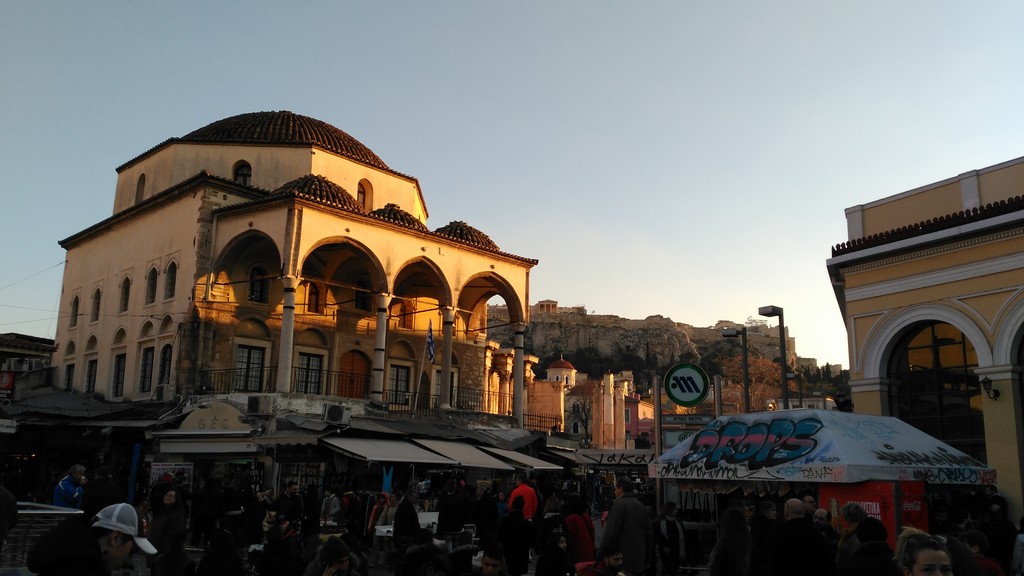
After getting off at Monastiraki by Athina Street we went towards our apartment, after observing what we had been told before coming to Athens: it's not a pretty city. Not at all. Chaotic, full of people in the streets, with motorbikes, cars and taxis driving randomly surrounded by decadent and decaying buildings, Athens is Mediterranean to the max. Nevertheless, the lack of that special touch that cities such as Naples or Lisbon have, which make decadence and negligence into their main aesthetic resource. Athens is ugly, crude, incomprehensible, dirty and smelly. But hey, it's been there for over 3000 years, it'll have something, and we were there to discover it.
Less than 10 minutes later, we were at the door of our hostel. Even though for a similar price, the hostel in Lisbon was great, this was a true reflection of the city in what we found: shabbiness. The bedroom was a good size, the bathrooms that we shared with the rest of the floor were fairly good as far as cleanliness is concerned and the bunk-beds were normal; but we had various problems with the temperature in the bedroom. The window, with old and rickety joinery, didn't shut at all and the hot water in the shower had ran out, so we were quite cold, therefore we had to put the air conditioning unit on which didn't resolve the problem at all. What's more, being on the last floor, the WiFi didn't work well in the bedroom which is unforgivable in a hostel for young people. So, if you're going to visit Athens and not spending much money is one of your priorities, then this hostel wasn't bad enough to not recommend. Also, it's central location meant that we never had to take any public transport, which saves a considerable amount of money.
Once settled in the hostel and thanks to the timing of our flight and the change of time, we had almost the whole day ahead. We went back to Monastiraki, from where we went around the numerous side-streets that surround this square and make a kind of bazaar, with shops and stalls that sell things from touristy t-shirts to military jackets, passing all types of fake brands.
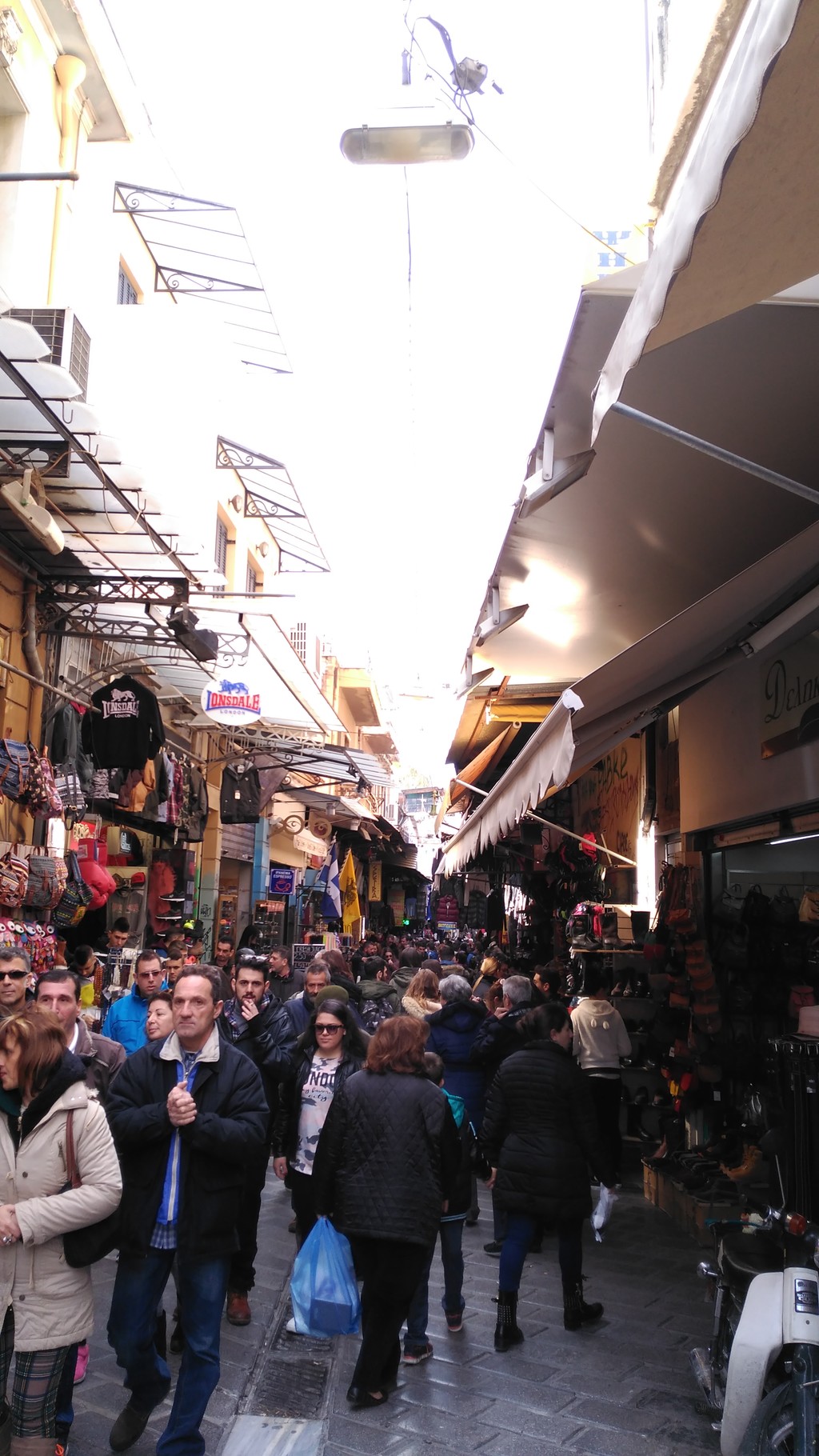
From there we, almost by chance, found ourselves at the entrance of the Ancient Agora of Athens, which was free because it was the first Sunday of the month. Despite the archaeological remains of this main public space of the Greek polis not being especially remarkable, the reconstruction of the Stoa of Attalos gave a good idea of what the buildings that formed this precinct were like, maximum expression of public, cultural, commercial and political life of the whole of Ancient Greece. Last year in Cartagena, I studied one of the two History of Art and Architecture modules that were on offer, so I could see almost everything that we had recently studied about Greek art, culture and architecture. Without a doubt it was exciting to see everything on the trip that I had only ever seen on PowerPoint slides jumping out from the screen and materialising itself in front of my eyes.
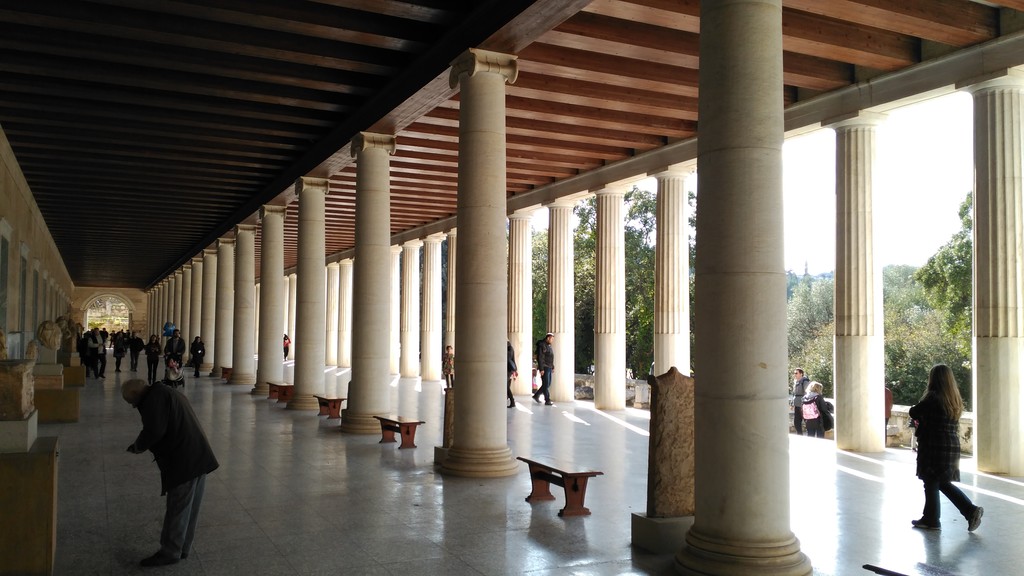
Another one of the main features of this archaeological area is the Hefesto Temple, located on a small elevation, where it dominates the Agora precinct, with beautiful views of the Acropolis. Despite its small size, this temple is one of the best conserved examples of all Greek architecture, as you can see in the following photos.
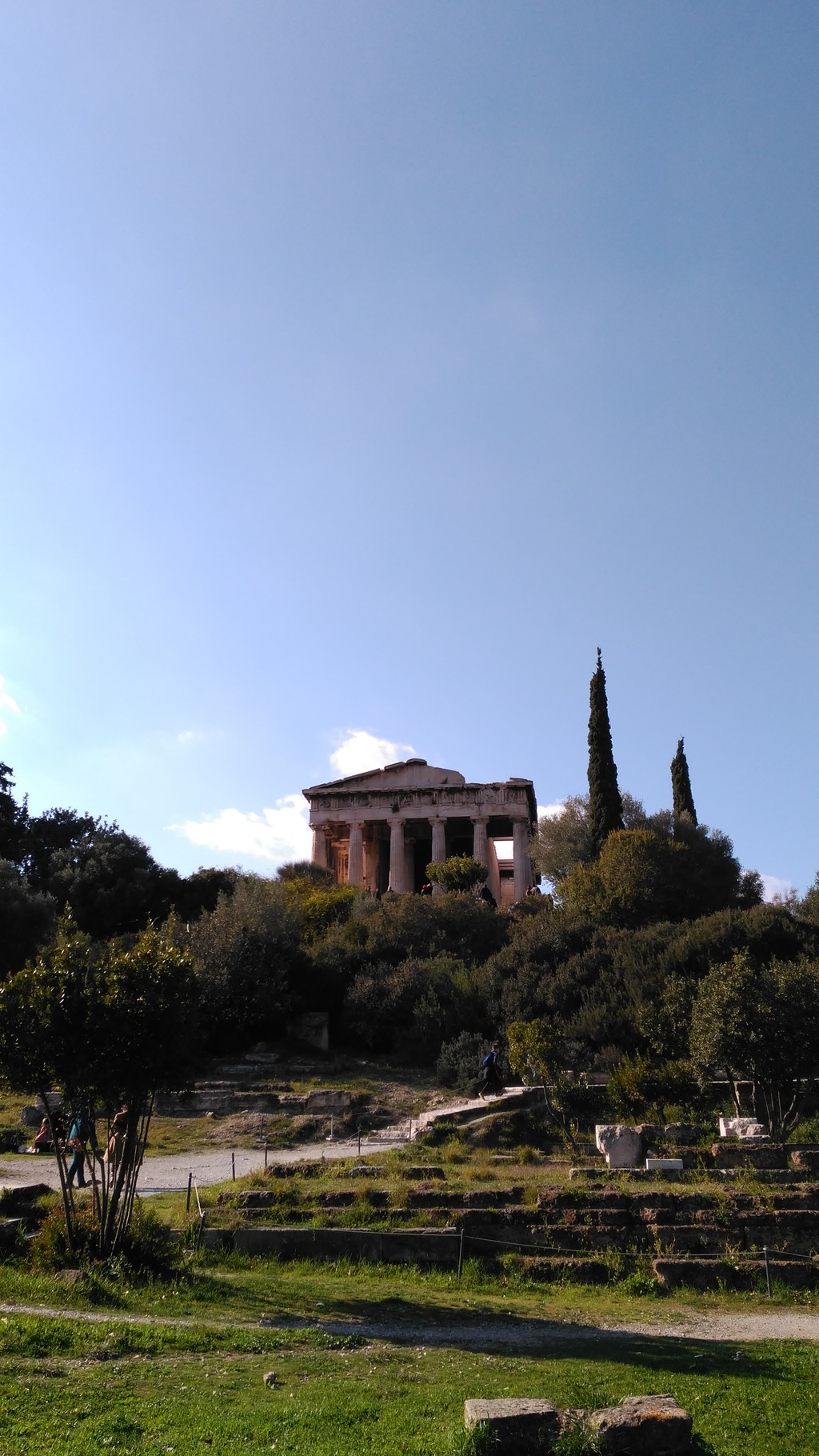
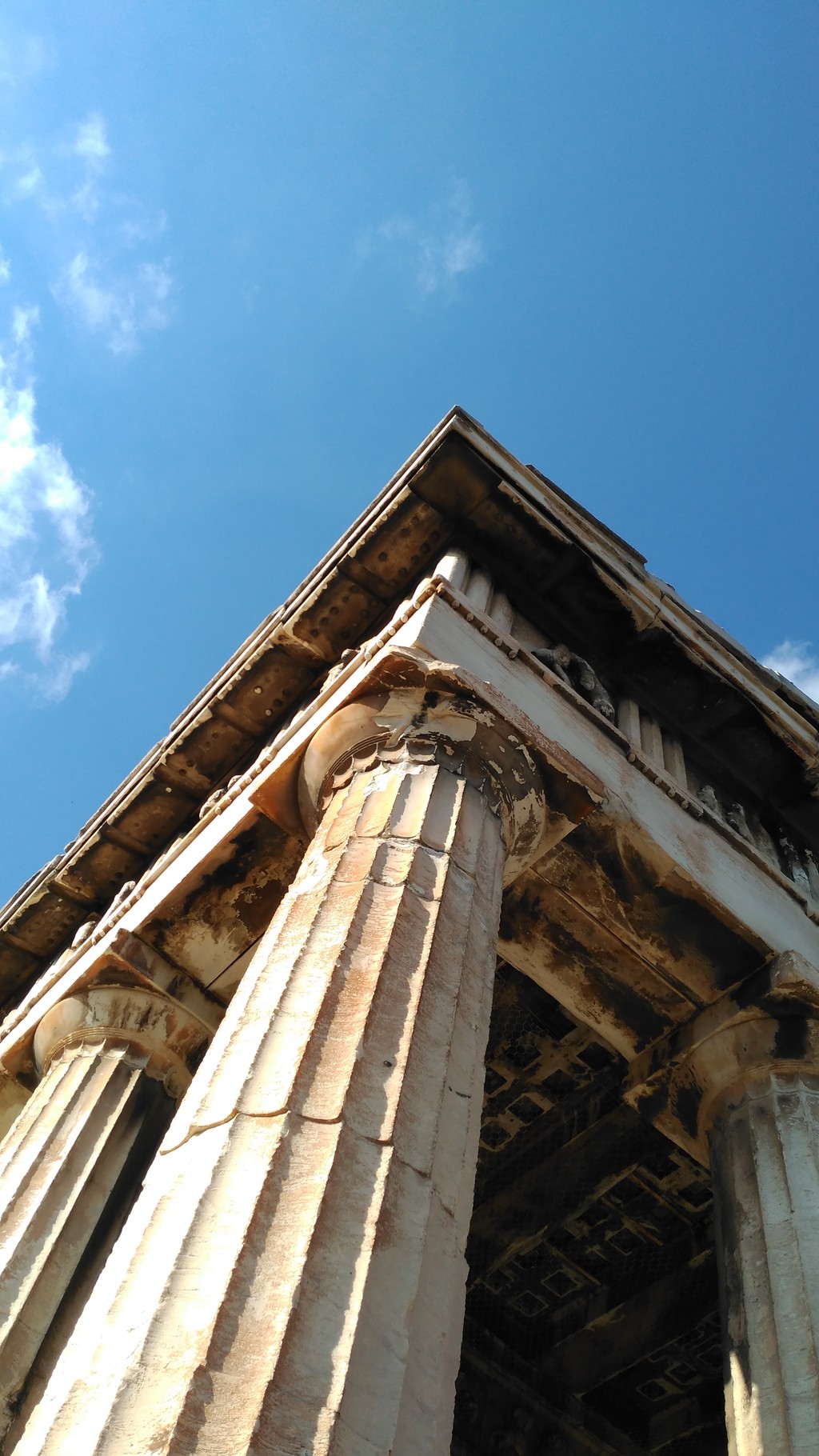
Once our visit to the Agora was over, we continued on to Adrianou street which is covered on one side by a half-buried railway that separates the archaeological area, it gave us some impressive views of the Acropolis to the multitude of restaurants and terraces which were piled up on the other side of the street. Full of people, we continued walking on this road towards Thiseio, from where we went back to Ermou Street towards Monastiraki which divides this street into two totally different parts. The part situated between Monastiraki and Thiseio is chaotic and dirty, full of second hand shops and stalls that sell all kinds of second hand objects, as you can see in this photo.
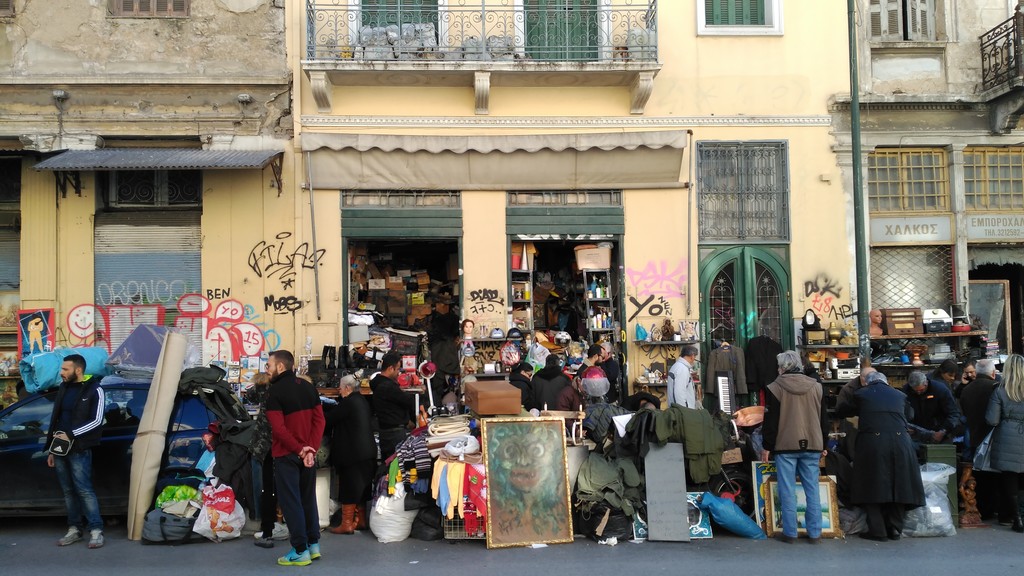
In Monastiraki, we recovered our strength by having a gyros a typical Greek dish which is kind of like a kebab, but with a few differences that make it a lot more flavourful, such as making it in a big pita bread or putting fries inside it. You can also choose between different types of meat, the traditional choice is souvlaki (a Greek version of a shish kebab) for only 1€. With a price between 2€ - 2. 30€, the gyros becomes the main accomplice of a thrifty traveller, to the point where you feel like you're going to turn in a gyros yourself by the end of the trip.

From there we carried on walking to the second part of Ermou street, whose commercial and pedestrian atmosphere is a lot more similar to any other European capital than the rest of the city. This road leads directly to the Syntagma Square, where you can find one of the many Orthodox churches that exist in Athens. When we got to Syntagma Square, HQ of the Hellenistic Parliament, we took a little time to enjoy the Mediterranean sun, which we missed, until the following hour where the changing of the guard took place outside the monument to an unknown soldier. This complex tradition has the peculiar soldiers as protagonists who keep an eye on the memorial; their funny and kind of ridiculous uniform is completed by a strange and incomprehensible choreography, that alternates from fast kicks to the floor to slow movements where the guards go through various positions that seem like they've been taken out of a Jackie Chan film. A totally unexpected spectacle.
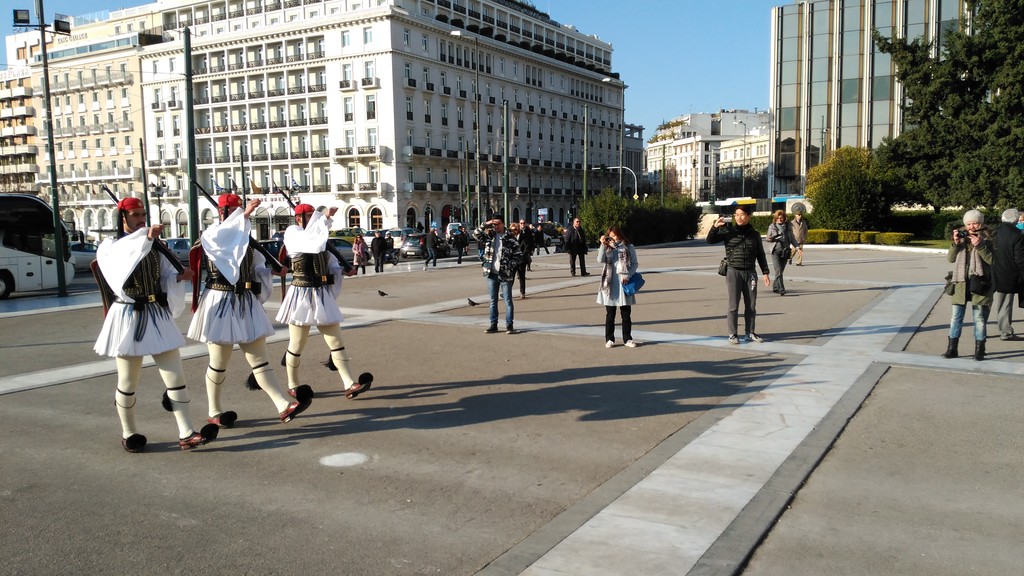
Once the changing of the guard was over, we went into the famous Plaka neighbourhood, full of souvenir shops and small taverns in a maze of side-streets and stairs. It is, without a doubt, one of the most pleasant areas of the city, in which the horrible architecture and dirt is left behind for pedestrian streets and cared for two or three-floor houses, which generates a more relaxed and quiet atmosphere, although it was fairly frequented. Because it was a Sunday, the terraces were full or tourists and locals happily enjoying a glass of wine or a couple of beers, which created a very appealing atmosphere.

Tired out from a long night travelling to Athens and a long day walking around the city, we decided to go back to the hostel and relax for a bit so we could enjoy the night. Before starting the journey we were looking at social networks trying to find advice and recommendations for going out in Athens, such as one of Vice's articles (whose style I really like). Whilst having a look through social media, I discovered that just as it was our first night in Athens, there was also a Welcome Party for the Erasmus students in their second semester, so we had the opportunity to show off our Erasmus student status and go to a different Erasmus party.
The party was in the Gazi district (metro station: Keramikos), an area full of bars and clubs which were quite lively considering it was a Sunday. The bar, called Gazi View, was located at the top of a tower, with some beautiful views of the illuminated Acropolis. The problem came when we discovered that the prices had risen too much for our budget (5€ for a beer), so we decided to go and party by ourselves. Nevertheless, we were finding bar after bar which all had similar prices, and also had dress-codes and a style of music that we had seen in the other bars, which brought us to the conclusion that we had gone to the posh area of Athens. So, we decided that it wasn't our night and that the following day we would try our luck in a cheaper area.
The following day we went to the Arch of Hadrian to participate in a Free Tour around the city, one of our "must-do's" on every trip. When we arrived at the starting point, we were surprised to not see more tourists waiting or some sort of tour guide with the typical credentials or emblem, so we started to think that the tour had started without us. However, a man of 50 who was sitting on a bench nearby, turned out to be our tour guide and we were the only people going on the tour.
At first, we all had a strange feeling in respects to the guide, but then he ended up being one of the best guides we had ever had. He was an Irish guy who had moved to Greece 23 years ago, he spoke about the city and the country as if it were his own, proof of integration. Furthermore, one of the things that we liked the most was that he gave us his opinion on numerous political and cultural matters without being too neutral which they sometimes do on these types of tours, which allowed us to find our a little more about Greek society and the reality of things such as the economic crisis or Greece's relations with the rest of Europe. The tour started at the Arch of Hadrian and the Temple of Olympian Zeus, continuing on to the National Gardens and the Panathenaic Stadium, which held the first modern Olympic Games in 1869.

From there, we went up Herodou Attikou Street and Vasilissis Avenue, where the houses of the Greek President and Prime Minister are found (Tsipras) and numerous Embassies, unttil we came to the Parliament building, all livened up by an interesting conversation about the crisis, austerity, cutbacks, salaries, the level of living, Troika, taxes, the sunken economy... in short, everything that usually accompanies Greece in the headlines. In Syntagma Square the conversation continued with useful lessons about the Second World War and some controversial claims from our guide about xenophobia and the rise of far right-wing political parties such as the Golden Dawn party (it's not that he liked them or was opposed to them, but he was trying to justify something to us, that in my opinion, is not justifiable).

We continued our tour by Ermou Street, visiting the Metropolitan Cathedral of Athens, a bland building whose restoration works made it even less interesting. What was pretty was the small church that accompanied the Cathedral on one of its sides, one of the many churches of this genre that are found in Athens. All of these churches of a Byzantine origin have in common, their brick factory, their small size and their location some steps below the rest of the street.

Carrying on, we made a brief stop, after which we went back to the Plaka area, visiting a small shop where we could try some olives, feta cheese and some shots made from various Greek liquors - one of them was made with honey. Going back down the streets of Plaka, we came to the picturesque Anafiotika district, whose narrow streets full of white walls remind you of the typical image of the Greek islands, well even the old part of any Andalucian town. We also passed a small alleyway full of graffiti whose aesthetic, I liked a lot.
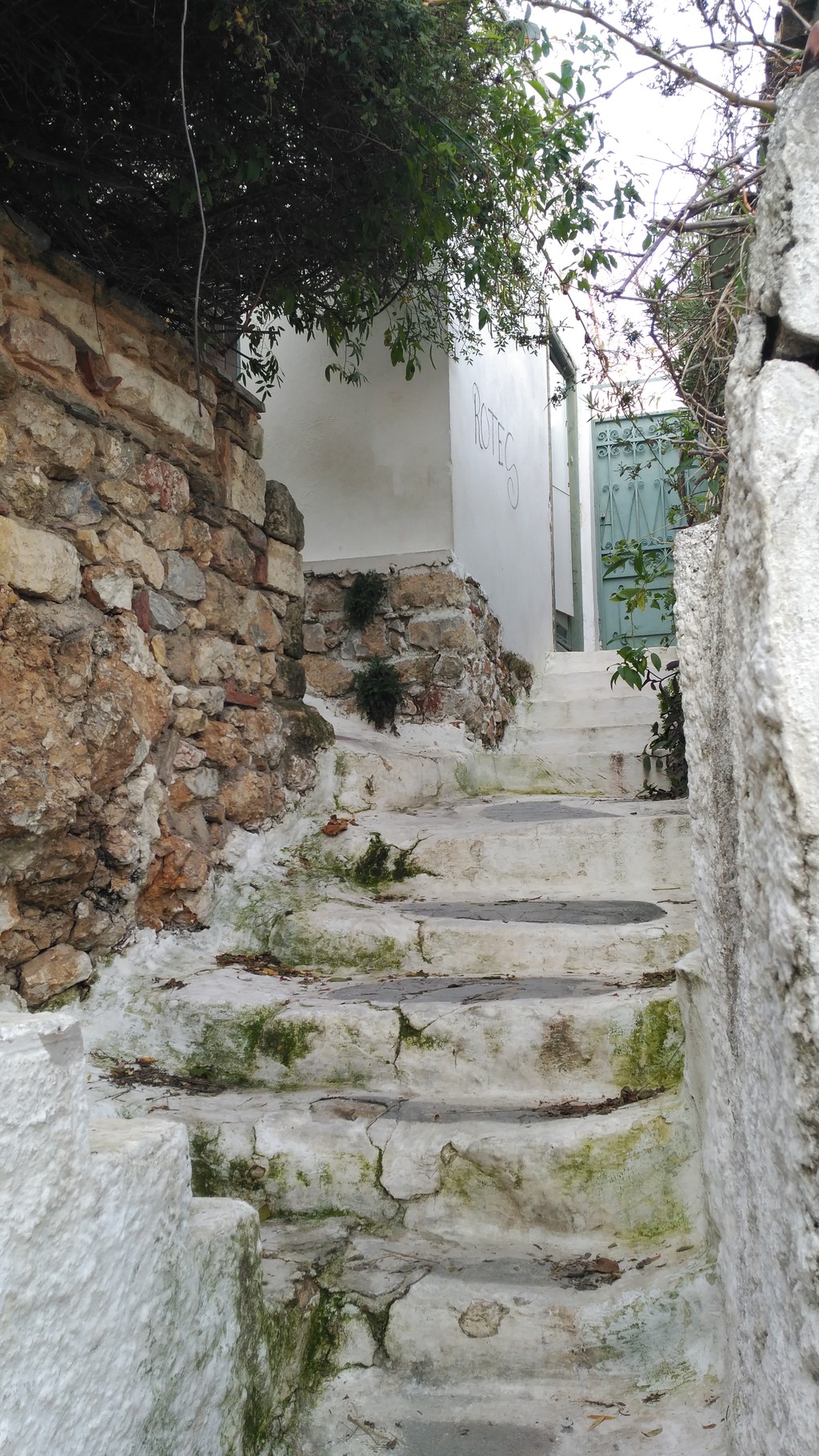

Lastly, we finished the tour by visiting the Areopagus, a rock where the city council of Areopago is collected, which administered justice in the city of Athens. There's marvellous views there of the Acropolis hill and it's green hillsides, crowned by the mass of marble that makes up the walls and the temples of the enclosure. Before saying goodbye to the guide and concluding the Free Tour, he took us to the entrance and gave us some advice for our visit to this monumental complex.
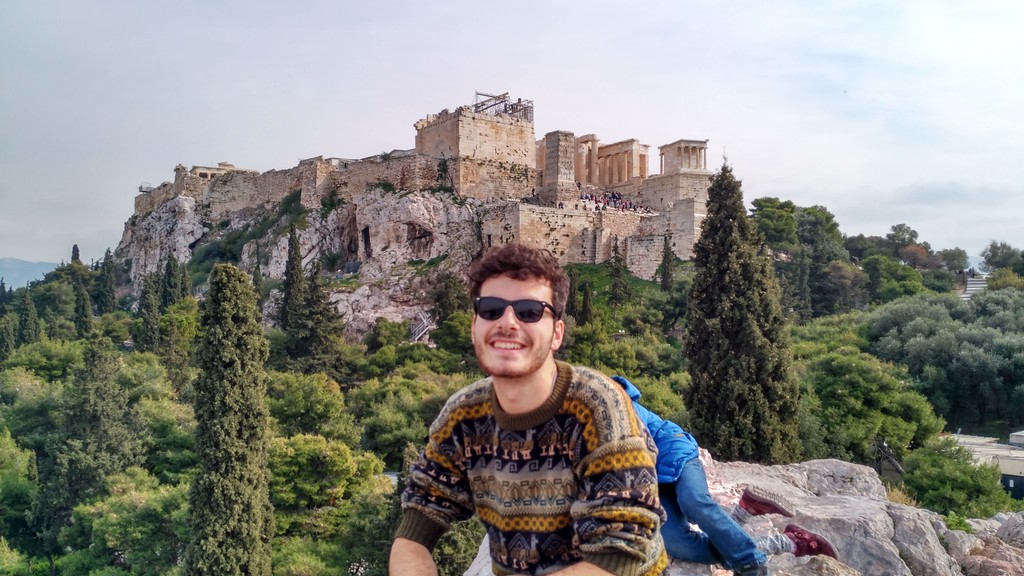
All the books on Greek mythology that I read throughout my childhood and 2 years of studying architecture meant that I was really excited to visit the Acropolis to the point of nearly exploding. Also, it turns out that all the museums and monuments in Athens are free if you're a student from Europe younger than 25, so by showing your student card, you will be able to enjoy the Athenian history completely free. The visit to the Acropolis starts by going through the once majestic Propylaea, the monumental entrance to the precinct, accompanied by the small Temple of Athena Nike, which sticks out over the city on a small hill.

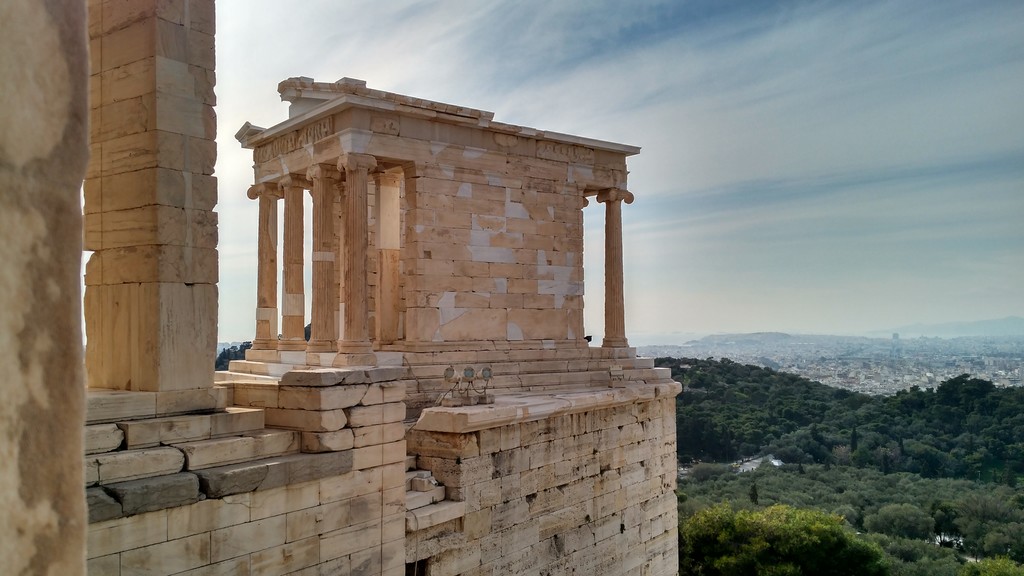
Once past the Propylaea, we found the main façade of the Parthenon, the most famous of all temples in antiquity. Destroyed and plundered to satiety over the centuries, the Parthenon stands with difficulty on top of the Acropolis hill, a reminder of the power that Athens once had. The main façade is found full of scaffolding thanks to the constant restoration works, so the visit was a little disappointing because of its state of conservation.
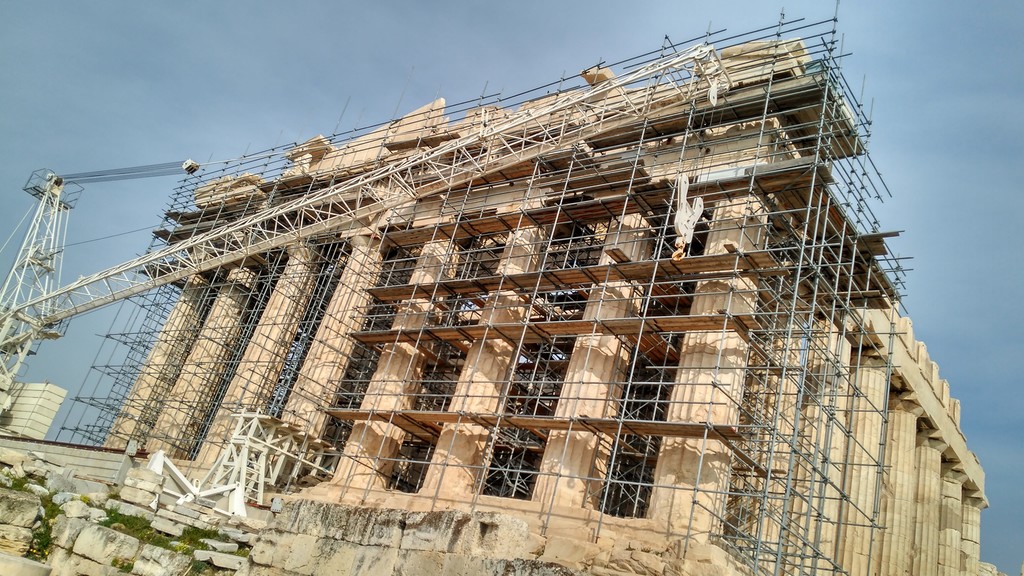
It's not that I didn't like seeing the Parthenon, in fact I really enjoyed trying to find the famous optical corrections that the builders introduced with the aim to make the building visually perfect, contributing something original to the world of architecture: only through geometric imperfection can we reach visual perfection. The problem is that the visit leaves you with a bitter taste in your mouth because you imagine how marvellous the building would be if it had been left in a better state, the same as other great monuments in antiquity, such as the Pantheon in Rome.
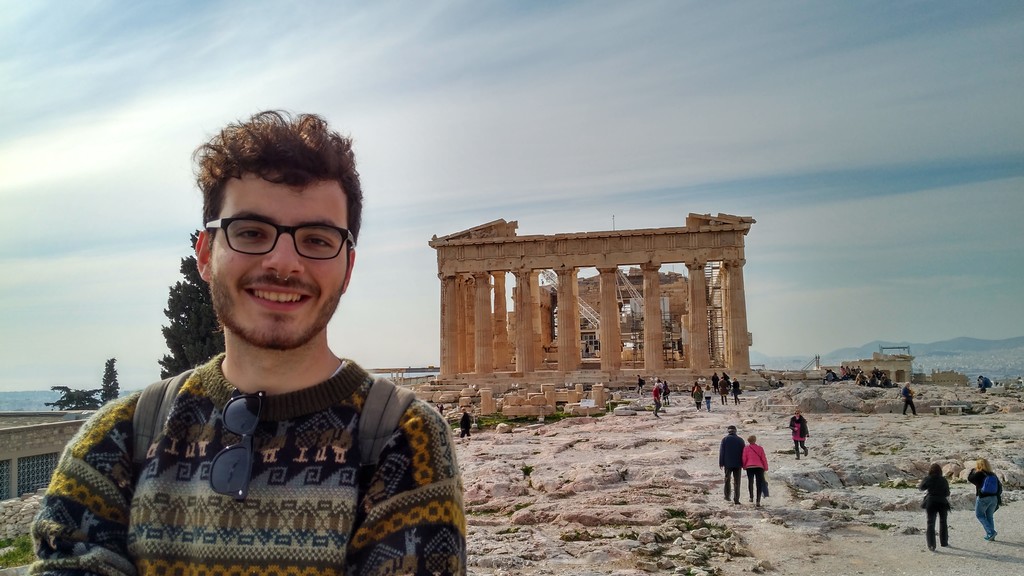

As well as the Parthenon, we can also find another interesting temple: the Erechtheion. Its asymmetry and strange, unique organisation is an exception in the world of Greek architecture, that was fairly well conserved in regards to the maintenance of a series of typologies, marked and defined. The feature that stands out the most are the Cariatides, statues of women that act as columns supporting one of the porches of the temple.

Lastly, praising the fantastic views of the city from the Acropolis is advisable, dividing itself from the sea to the mountains, the visitor discovers the huge size of this city, with almost 4 million inhabitants. You can also see the main monuments of the city, such as the Panathenaic Stadium or the Acropolis Museum, as well as the two theatres located on the hillside.
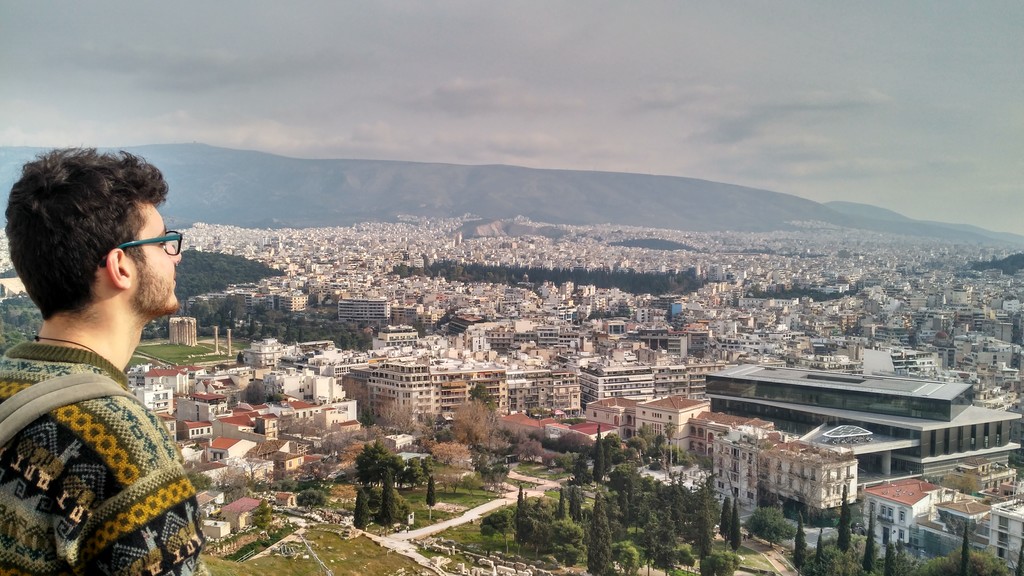
Once we were finished with our visit to the Acropolis, we went back down south in the direction of the Acropolis Museum, not before regaining our strength with a gyros. The visit to the museum, also free for European students, is very recommendable, both for the content and the continent. The building, inaugurated in 2009, is a very interesting project, with various intelligent gestures. The first is that the entire building is found elevated by pillars above archaeological remains of houses and Roman and Byzantine warehouses, that are shown to the visitor through different glass floors, both at the main entrance and the interior of the museum. Inside, the explanatory tour is designed in a very dynamic way, which ensures that the visit isn't too heavy. The exhibition works are very conveniently chosen, finding some of the most famous Greek sculptures, such as the Moscophoros.
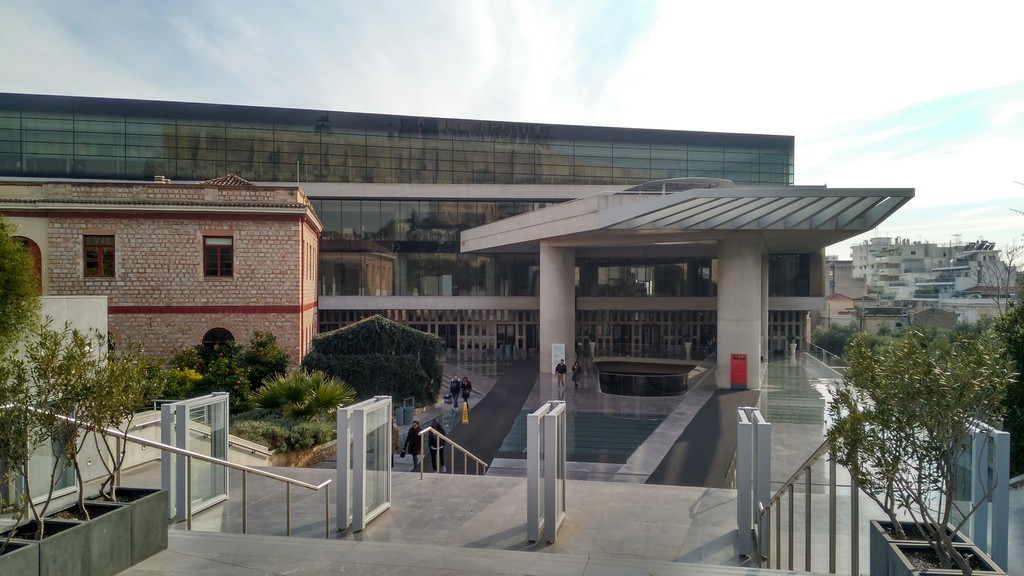
However, without a doubt the last floor is the best. Constructed with the same dimensions and orientation as the Parthenon, showing the ruins of the façades, the frieze and the metopes in a very interesting way, all together in the same position they would be in on the Parthenon. As well as following the form and orientation of the temple, the last floor distances itself from the rest of the building and makes a turn of its own, giving it a lot of personality. Without a doubt, it's a shame that the majority of the ruins of this temple are not found in this museum, whose large windows look directly at the Acropolis, they are instead found more than 2000 kilometres away in the British museum.
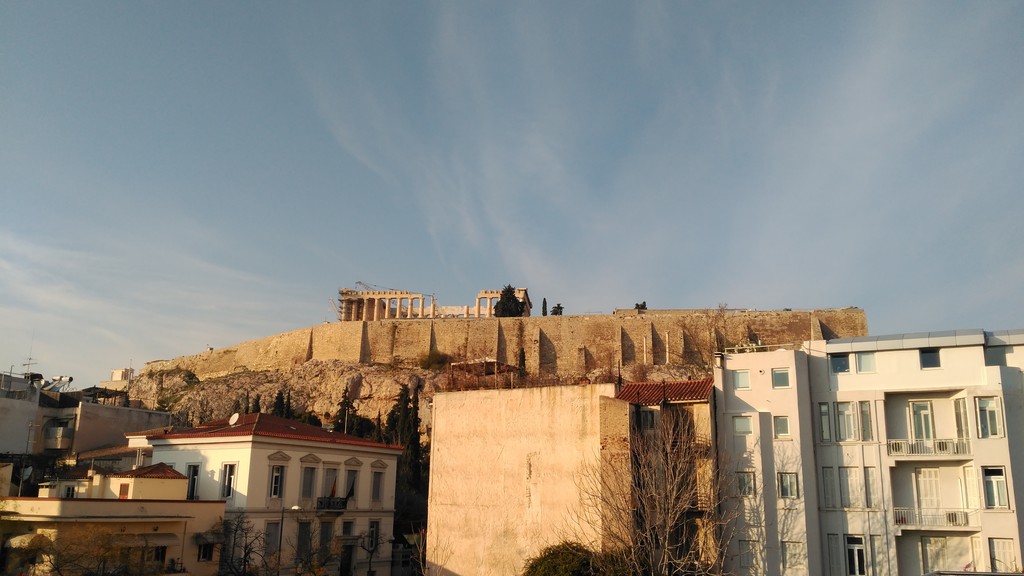
After visiting the museum, we went back to the area of our hostel wandering past Plaka, to try and find a supermarket so we could buy something cheap to drink at night. We only managed to find a Carrefour Express, whose prices were extremely expensive, so we decided to relax for a bit in the hostel and have a look on the internet again to try and find somewhere to go out in Athens. With various bars in mind, we went to try our luck again, discovering bit by bit that it was impossible to find a beer for less than 5€.
We stopped for a hot dog and a can of beer (1. 80€ for the 2 things) chatting about different social and political issues, in Monastiraki Square, like old philosophers chatting in the Athenian Agora. We also made some friends there with some Greek guys who confirmed for us that going out in Greece is extremely expensive, above all, taking into account their awful economic situation. After we went to have dinner in Psyri, a very central zone full of urban art and places to eat. We found a type of bakery in Iroon Square, very beautifully decorated, in which I tried a delicious spinach and feta cheese pastry (2€).
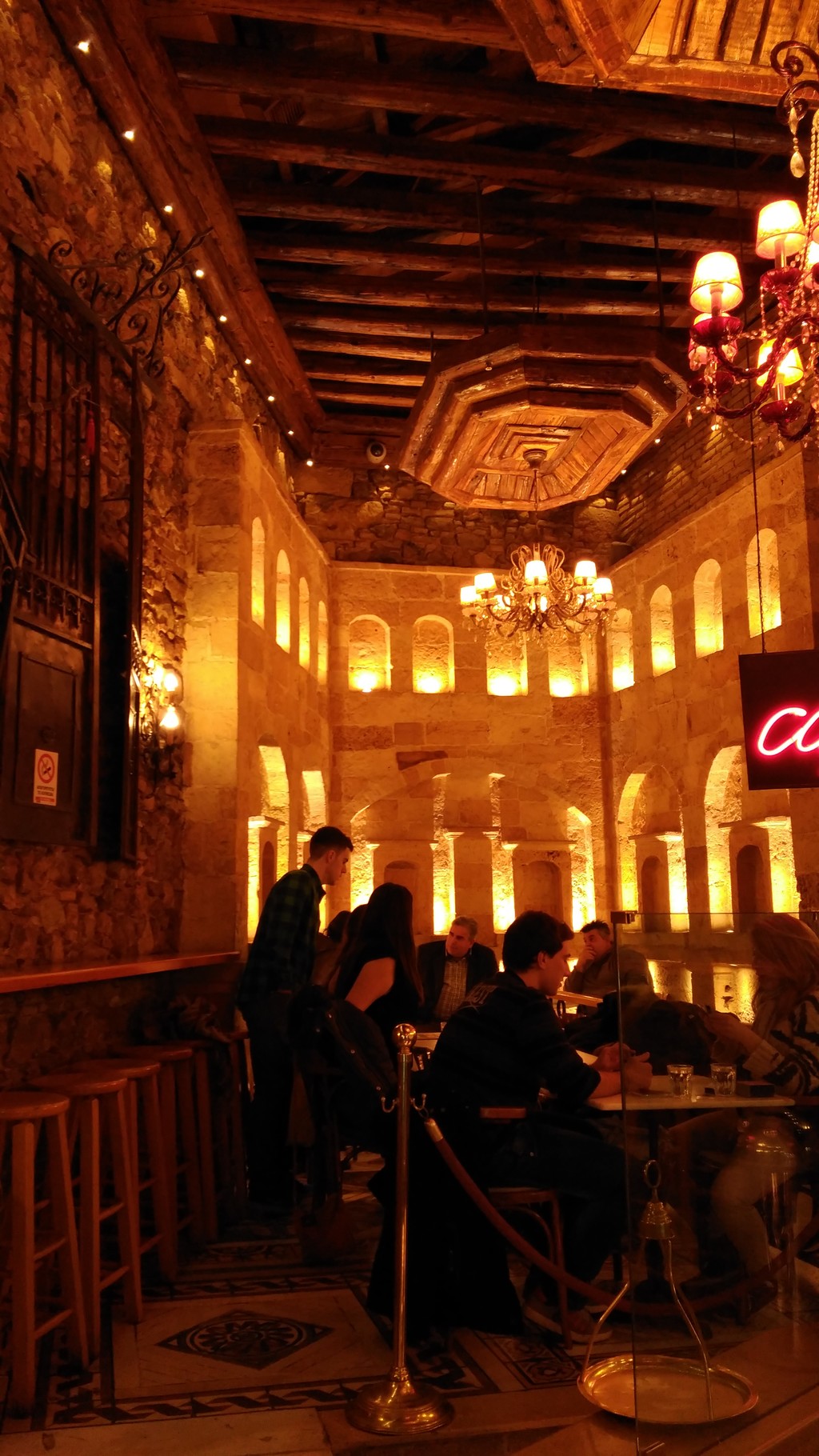
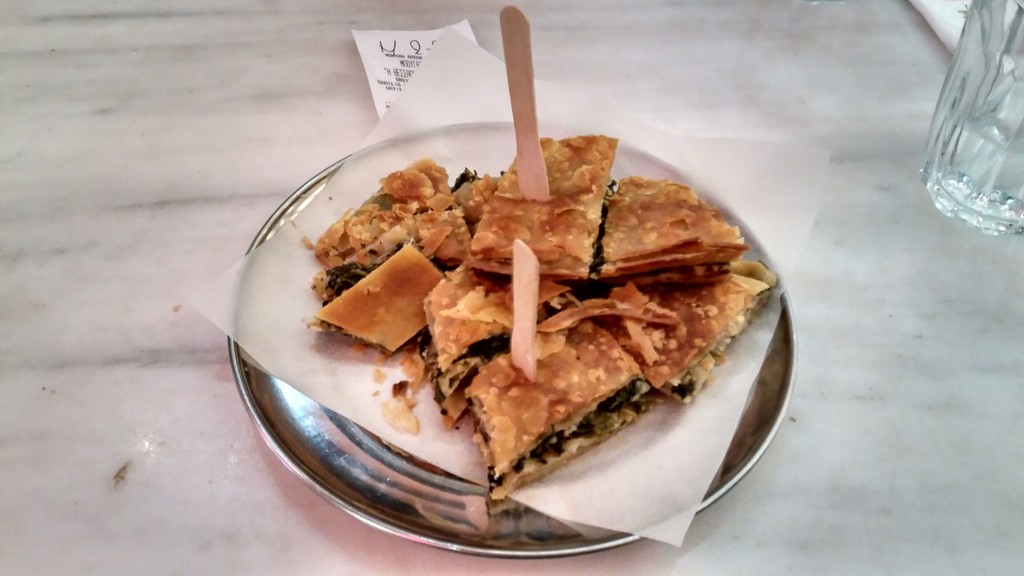
The following day, we decided to get up later and relax a little. With a type of giant donut (70 cents) in my hand, we went to the National Archaeological Museum - also free for students. This museum holds some of the most famous works of Greek art, but it's kind of badly set out, especially in comparison to the one at the Acropolis. Whilst one proposes a dynamic and simplified tour, that makes the visit very entertaining and informative, the Archaeological Museum is made up of gallery after gallery in which they've mounted hundreds of works of art, in a way that was a little confusing and chaotic. So, you can check the difference between the old and new way of understanding museums and exhibitive spaces, with an evolution towards more interactive and agile systems.
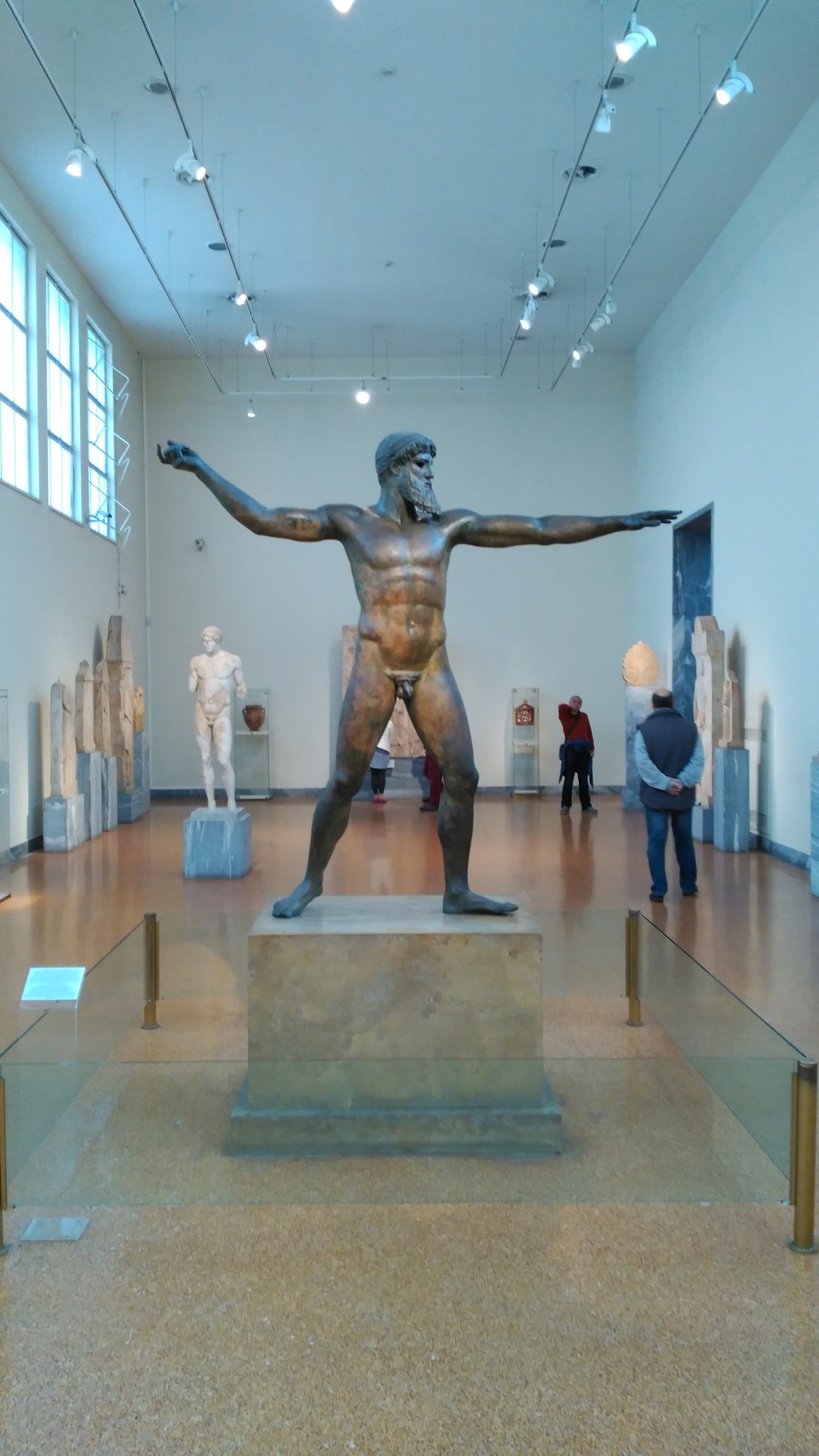
After, we went to the Pedion Areos park, which was quite ugly and deteriorated, with a homeless camp site included. Then, we wandered by the back-water neighbourhood of Exarcheia, epicentre of the political movement in Athens, with numerous anarchist, communist, anti-fascist (and everything else that ends with -ist) collectives. After a beer in Exarcheia Square, we continued walking towards the University of Athens, where we enjoyed the Mediterranean sun and a good gyros on a little terrace. From there, we went towards Ermou street, where Isa saw a cheap place to get her septum pierced (for only 18€), whereas in Spain it costs 30€ and in Germany it costs 60€. If you're interested in getting a piercing or tattoo, the place was quite good, it was called θHPIO, at 106 Ermou Street.
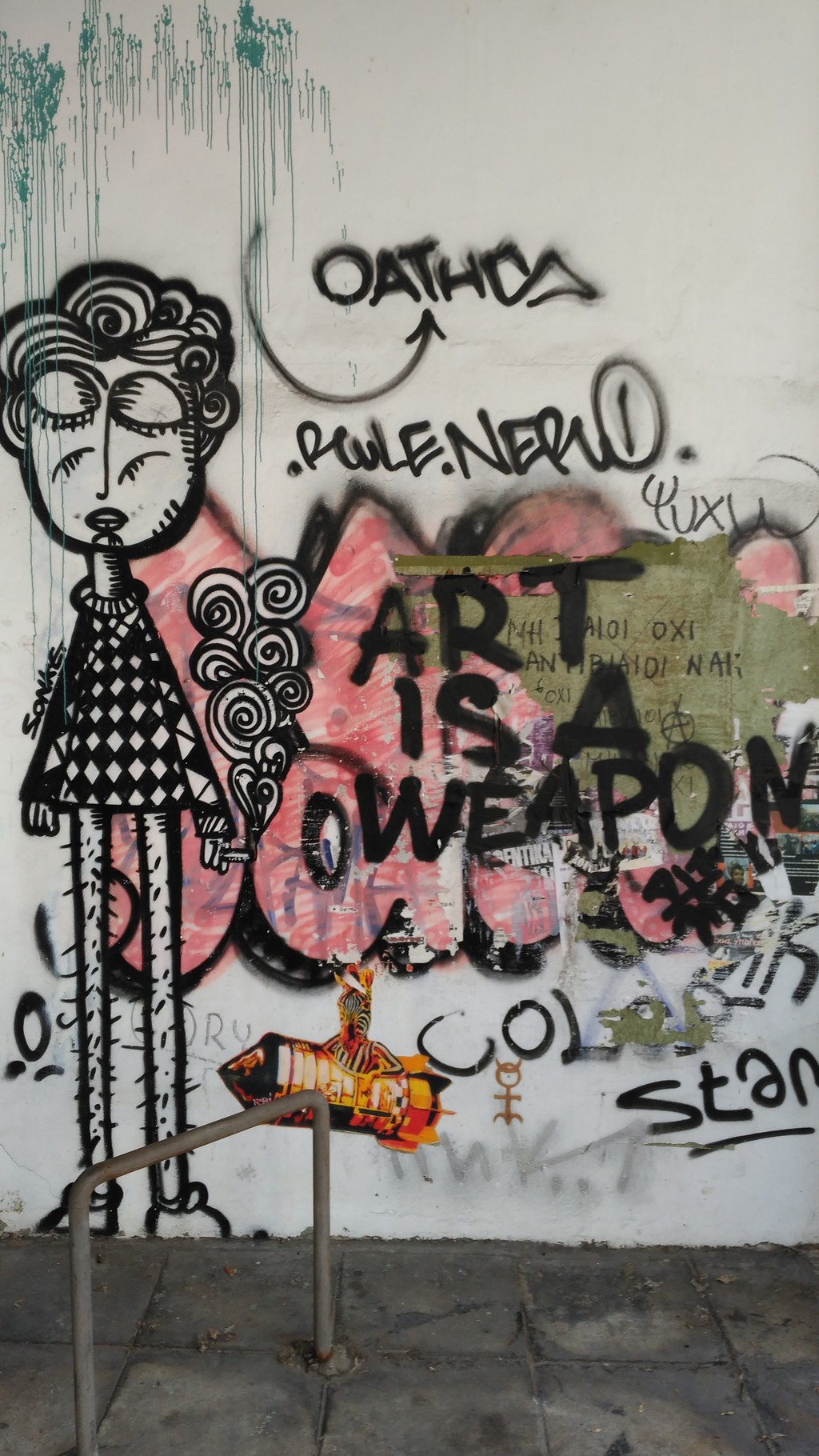
To mark the end of our trip to Athens, we decided to go up Mount Lycabettus and see dusk over the city. Firstly, we went by a supermarket in the area of Kolonaki, where we got supplies (crisps and Greek beers) and we set off on the climb up the steep streets. Even though there was a funicular to go up, we wanted to save money and go up on foot, and also burn off the numerous gyros that we had eaten during our trip. The views from the top of the hill are impressive, because the white and dilapidated buildings of the Hellenistic capital were spread out as far as the eye can see, it's only limited by the mountains that surround the city and by the Aegean Sea.
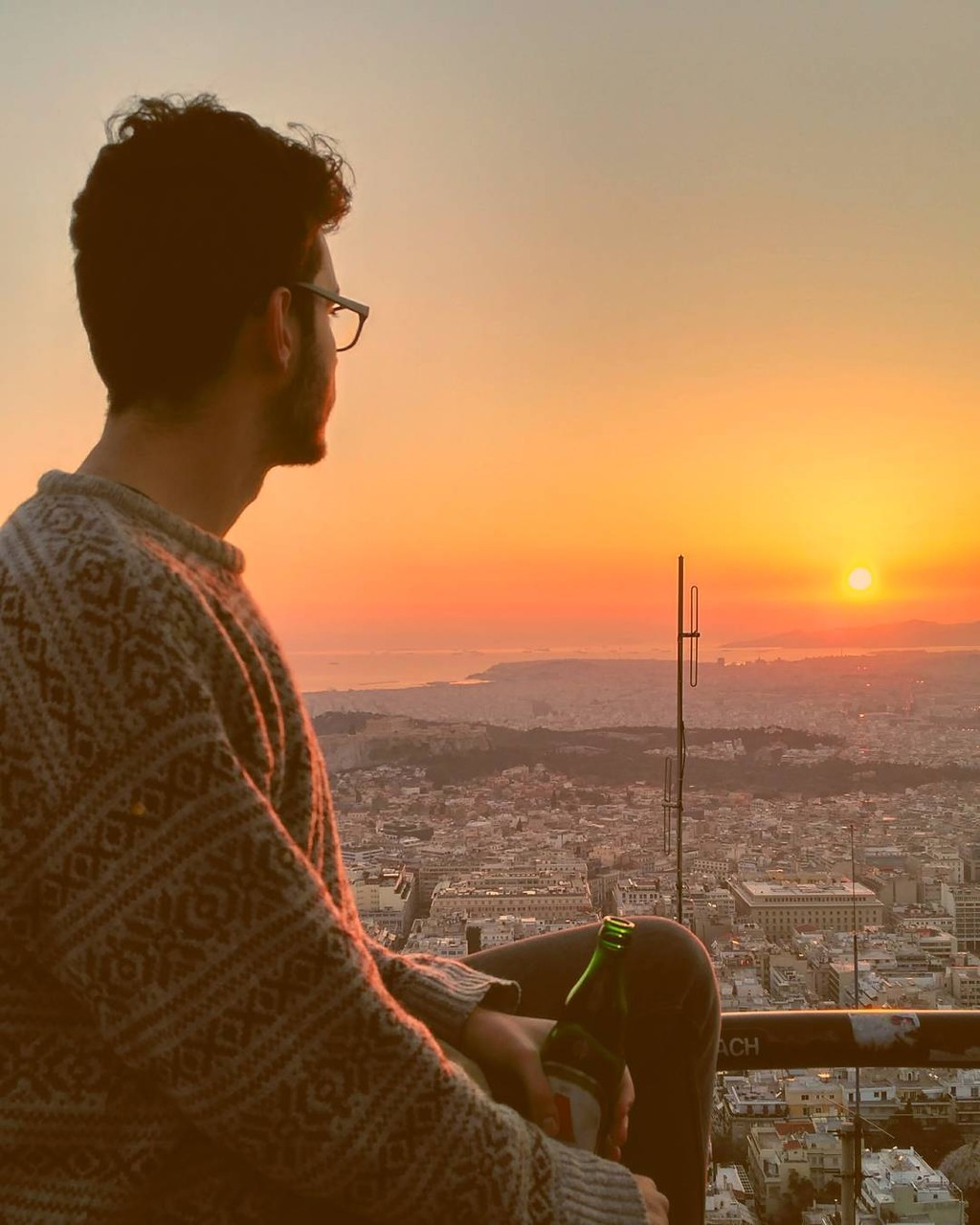
When it got dark, we came back down from Lycabettus and we went back to relax a little in the hostel before dinner. We went back to the Psyri area to find a restaurant because we wanted to try some more Greek food and we were willing to spend a little more on dinner (when I say a little more, I mean going from 2€ to 7€, that's our idea of luxury). In the end we found a restaurant with numerous specialities, where we tried dishes such as Tampule salad (a kind of rice with mint and lemon) and different types of grilled meats. Us being Spaniards, we liked the place, despite it being a bit tricky for tourists, since we could enjoy something as simple as eating bread with a nice olive oil; but the French, more demanding than us, didn't like the place at all.
The following day, we had to get our flight at midday, so the only thing we did after dinner was take one last wander around the city centre and get some ice cream. The following morning, when we were walking to catch the metro to the airport, we found an odd shape, no doubt a random and authentic image which comes to be Athens: in front of the central market we saw how they unloaded this gigantic item caught by some sort of fisherman, it was an impressive size.
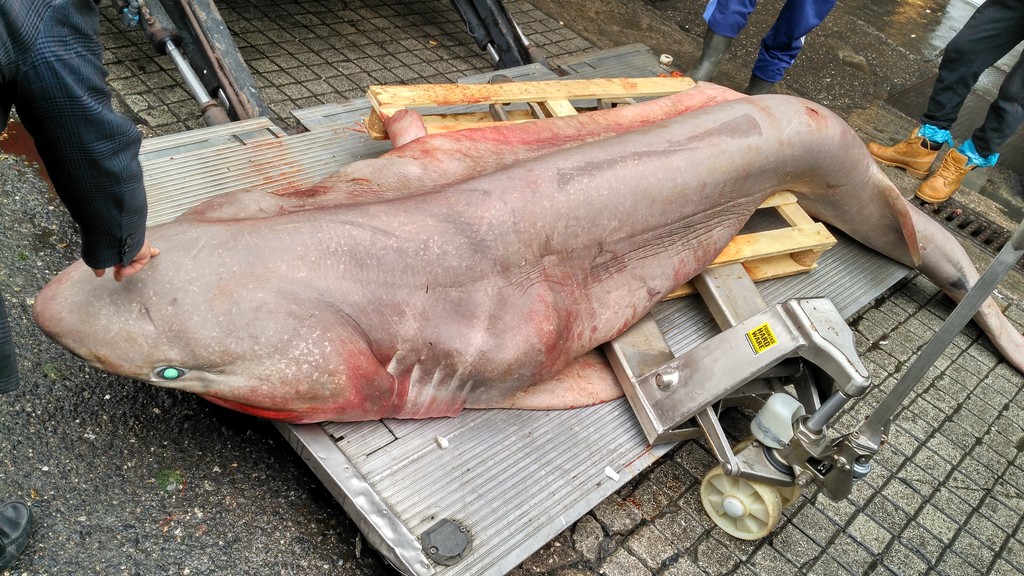
My conclusion of Athens is that despite it being a terribly ugly city, its really worth a visit, to see both the remains of its exciting culture such as old Greece, as well as seeing the Mediterranean similarities as well as the differences which come to make up a country like this, with your own eyes. Without a doubt it's a very interesting place to visit, which also allows the traveller to do everything for a low price, so I totally recommend it.
I hope that you have enjoyed this article and that it comes in use to anyone who is planning to travel to Athens.
Until the next post!
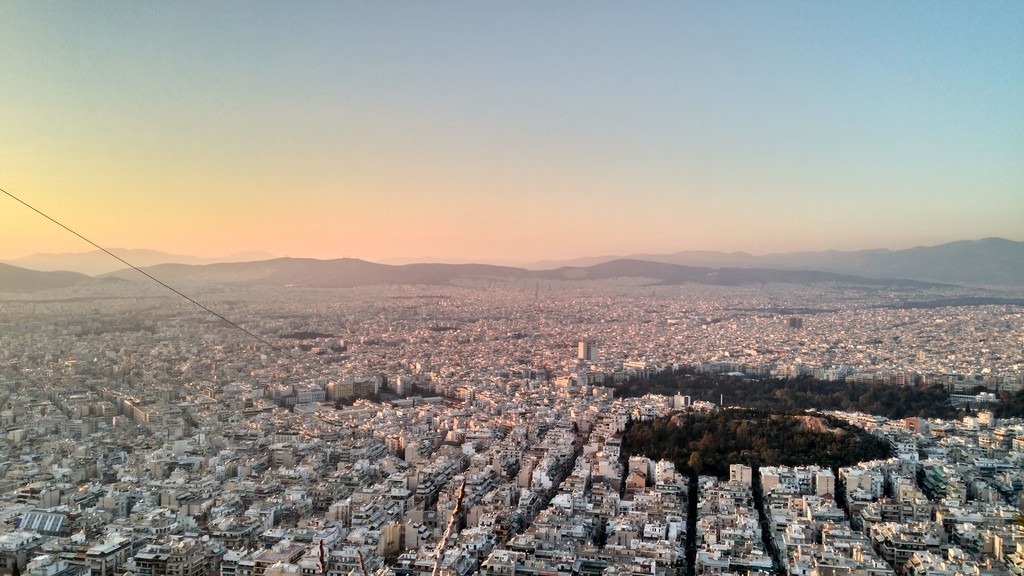
Photo gallery
Content available in other languages
- Español: Eurotrip #6: Atenas
- Português: Eurotrip #2: Atenas!!
- Français: Eurotrip #6: Athènes
Want to have your own Erasmus blog?
If you are experiencing living abroad, you're an avid traveller or want to promote the city where you live... create your own blog and share your adventures!
I want to create my Erasmus blog! →














































Comments (0 comments)